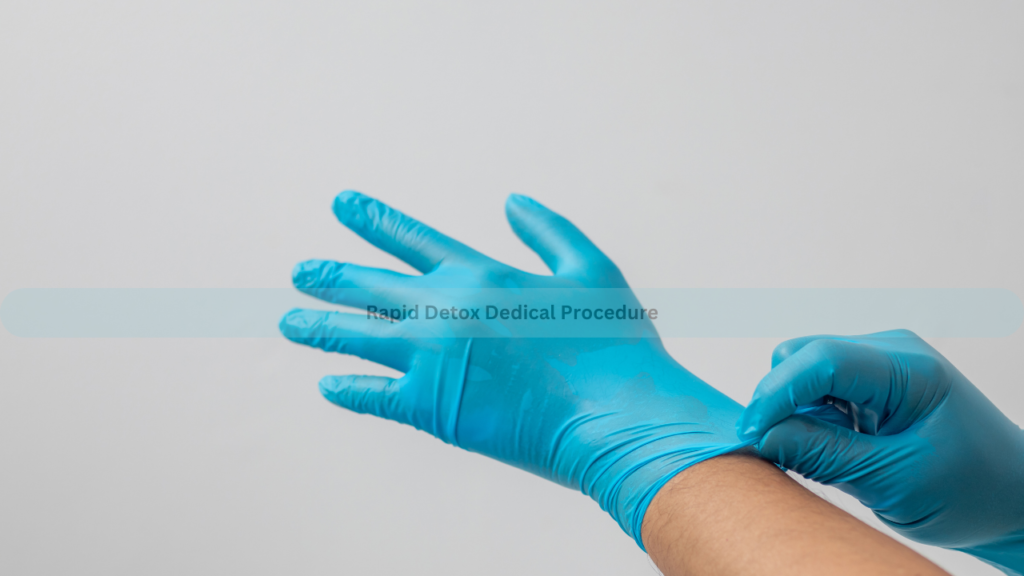
Opiate addiction is a serious and growing issue affecting millions of individuals worldwide. As people seek out effective treatment options, one method that has gained attention is rapid opiate detoxification. This process offers a fast and intense way to remove opiates from the body under medical supervision. However, understanding how it works, its potential benefits, and its associated risks is crucial for anyone considering this option.
What is Rapid Opiate Detoxification?
Rapid opiate detoxification is a medical procedure designed to accelerate the process of removing opiates, such as heroin, morphine, and prescription painkillers, from the body. Unlike traditional detoxification methods, which can take several days or weeks, rapid detox aims to shorten the withdrawal period significantly—usually within 24 to 72 hours.
The procedure typically involves administering medications to block the effects of opiates and induce withdrawal symptoms while the patient is under anesthesia. By being sedated, the patient avoids experiencing the painful and distressing withdrawal symptoms that usually accompany opiate detoxification. The goal is to cleanse the body of opiates quickly and allow the person to move on to other stages of recovery, such as therapy and counseling, sooner.
How Does Rapid Opiate Detox Work?
Rapid opiate detoxification is typically performed in a hospital or specialized clinic setting. Before the procedure begins, the patient undergoes a thorough medical evaluation to determine their suitability for the treatment. This includes assessing the patient’s overall health, substance use history, and any co-occurring mental health disorders.
During the detox process, the patient is placed under general anesthesia. While they are sedated, a combination of medications—usually opioid antagonists like naltrexone or naloxone—are administered to rapidly flush the opiates out of their system. These medications work by binding to opioid receptors in the brain, blocking the effects of opiates and triggering withdrawal symptoms. However, because the patient is under anesthesia, they are unaware of these symptoms during the most intense phase of withdrawal.
The procedure typically lasts several hours, after which the patient is kept under observation to ensure their safety as they recover from the effects of anesthesia and detox. Depending on the clinic or hospital, patients may be monitored for a day or more before being discharged.
What to Expect After the Procedure?
Although rapid opiate detoxification can significantly reduce the duration of the withdrawal process, it is not a cure for opiate addiction. Withdrawal symptoms may still occur after the procedure, though they are generally less severe. Patients may experience discomfort, such as nausea, body aches, fatigue, and emotional distress. A crucial part of the post-detox phase is ongoing support, which typically involves entering a comprehensive addiction treatment program, including behavioral therapy, counseling, and long-term medication-assisted treatment (MAT) if necessary.
Benefits and Risks
Rapid opiate detoxification can be appealing because it shortens the withdrawal period, which many people fear when considering treatment. It is especially attractive for individuals who have unsuccessfully attempted traditional detox methods in the past or who experience severe withdrawal symptoms.
However, rapid detox is not without risks. It can be physically demanding, and there have been reports of complications, including heart problems, respiratory issues, and in rare cases, death. Because of these risks, the procedure is usually recommended only for individuals in good health and under close medical supervision.
Conclusion
Rapid opiate detoxification offers a swift way to overcome the physical dependence on opiates, but it is not a stand-alone treatment for addiction. It is most effective when followed by a comprehensive recovery plan, including therapy and ongoing support. Anyone considering rapid detox should consult with medical professionals to understand the potential risks and benefits and to determine if this approach is right for them.
